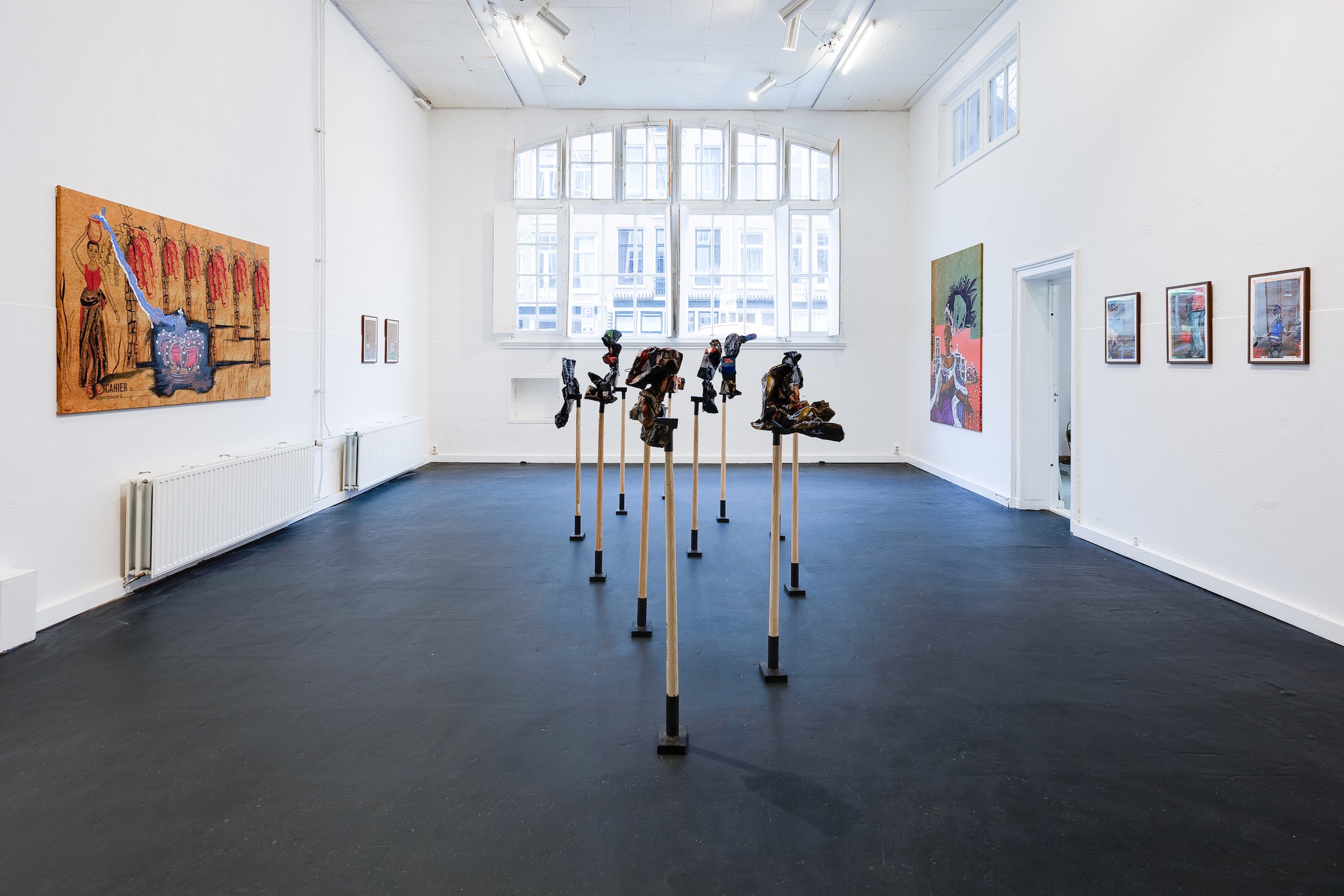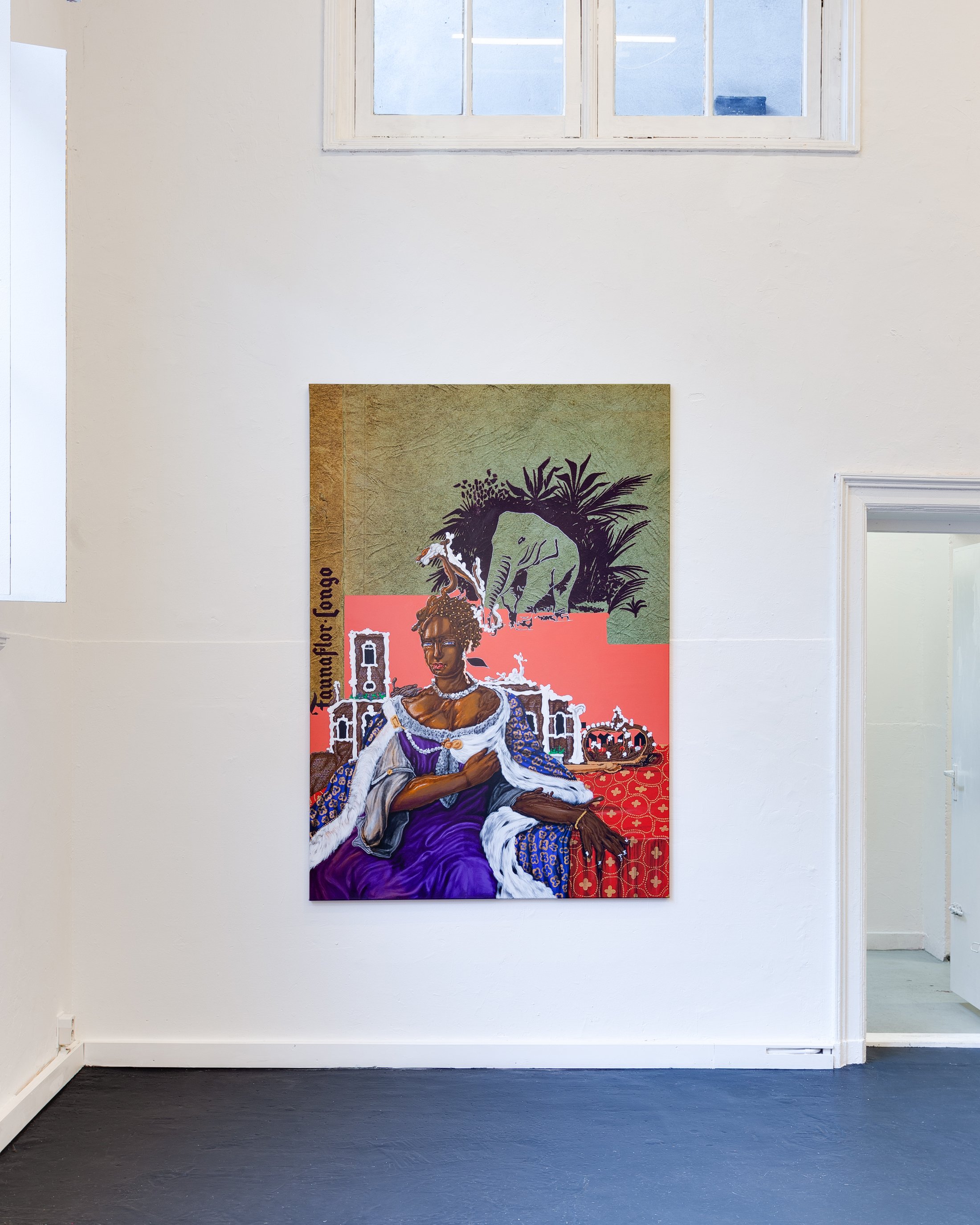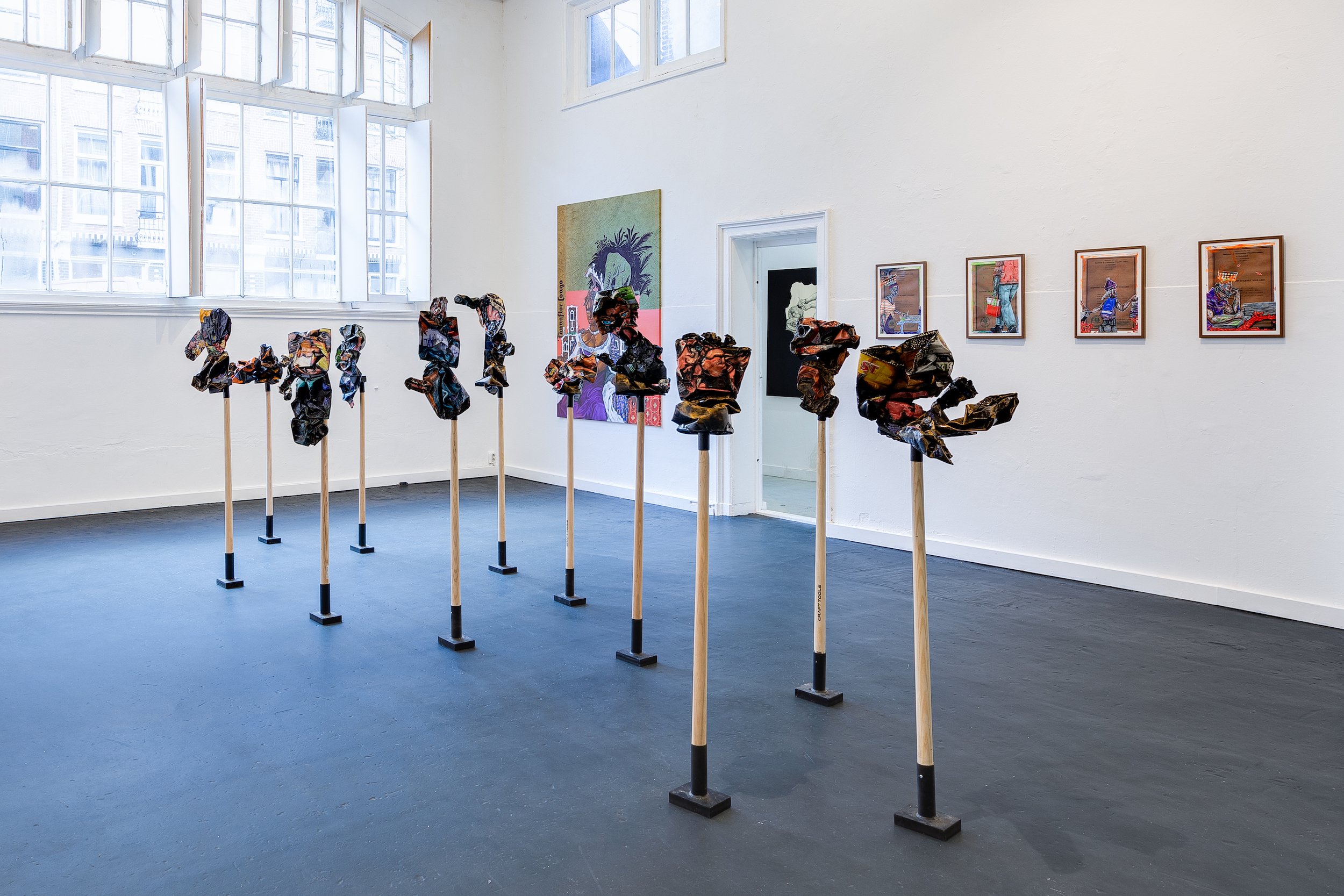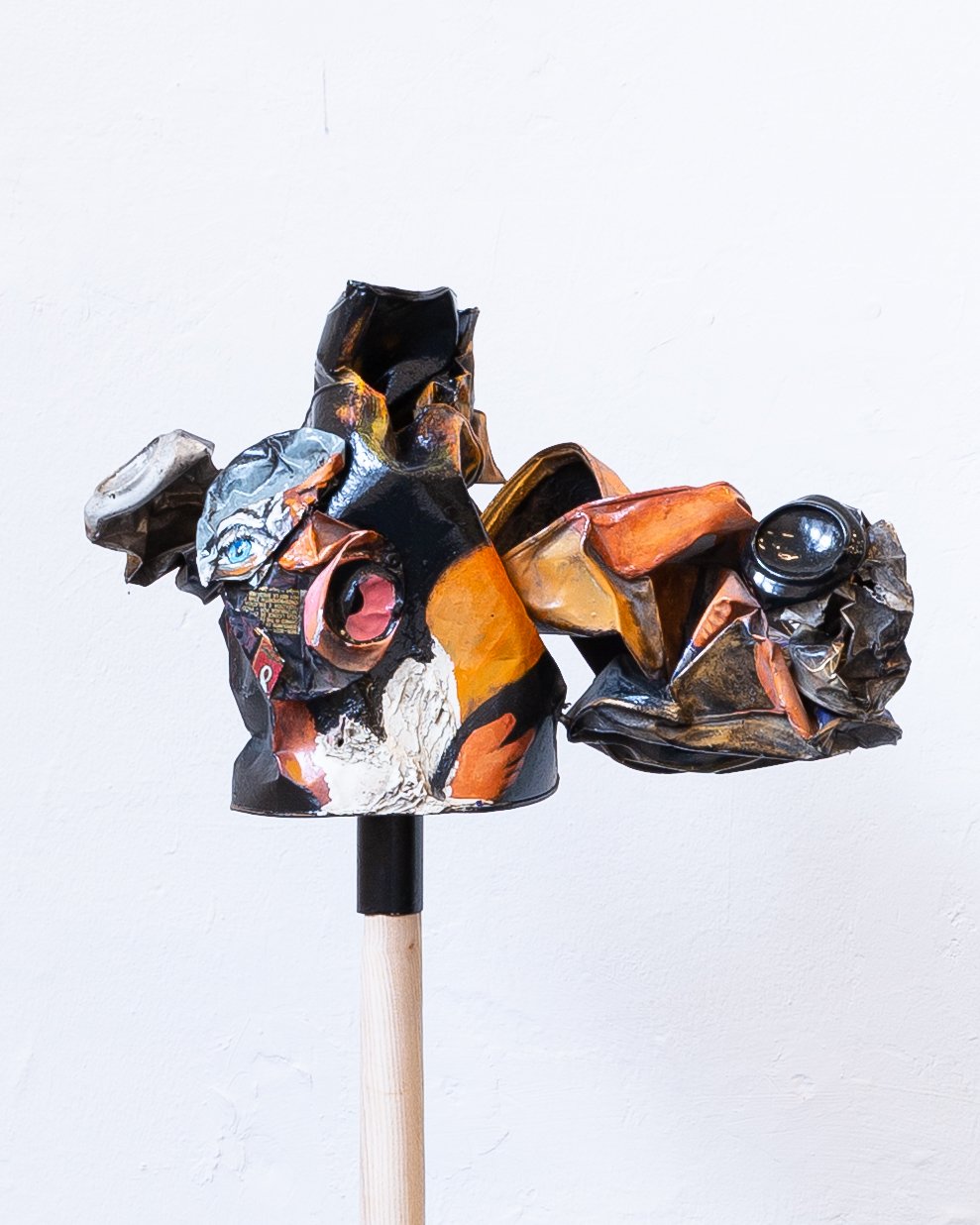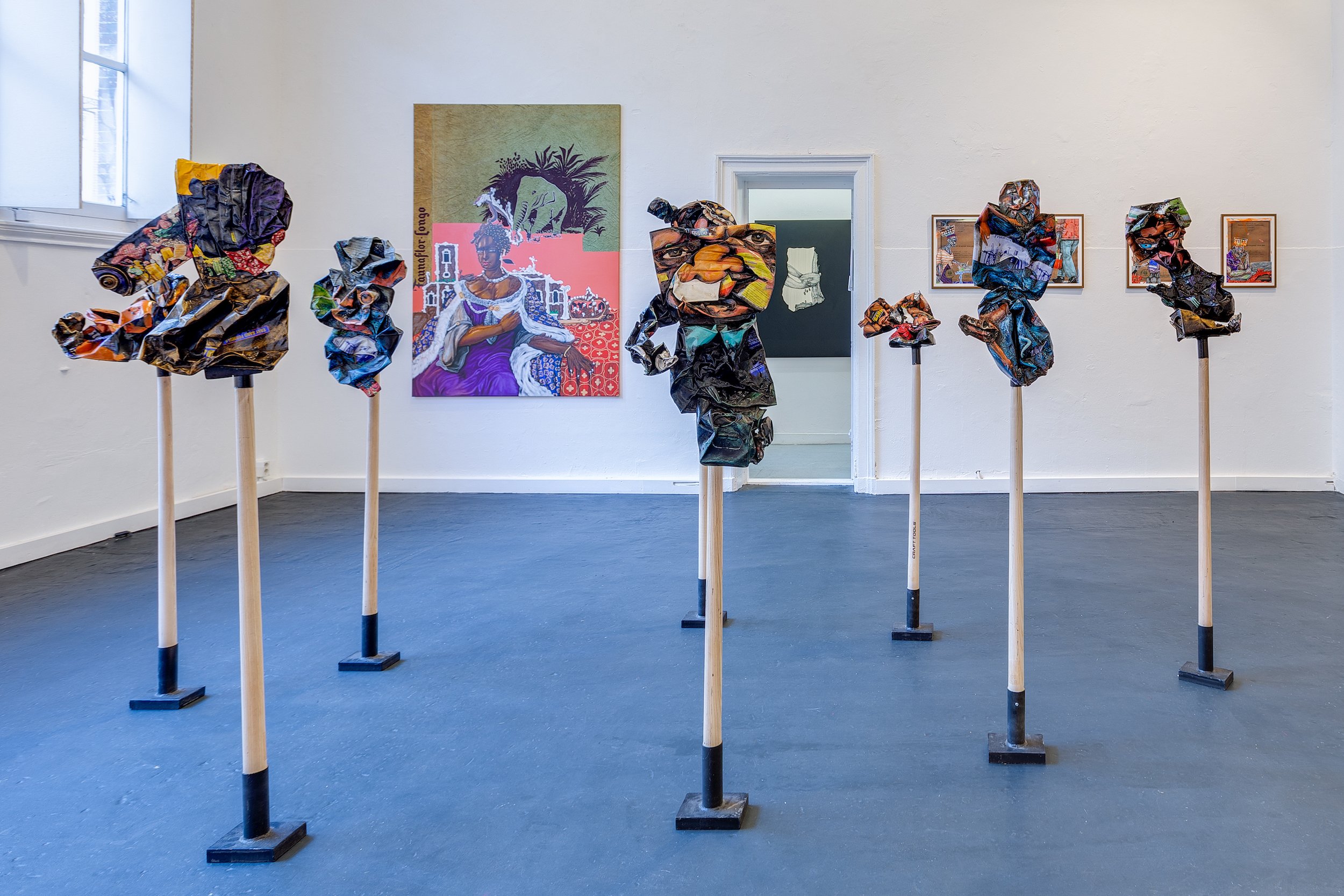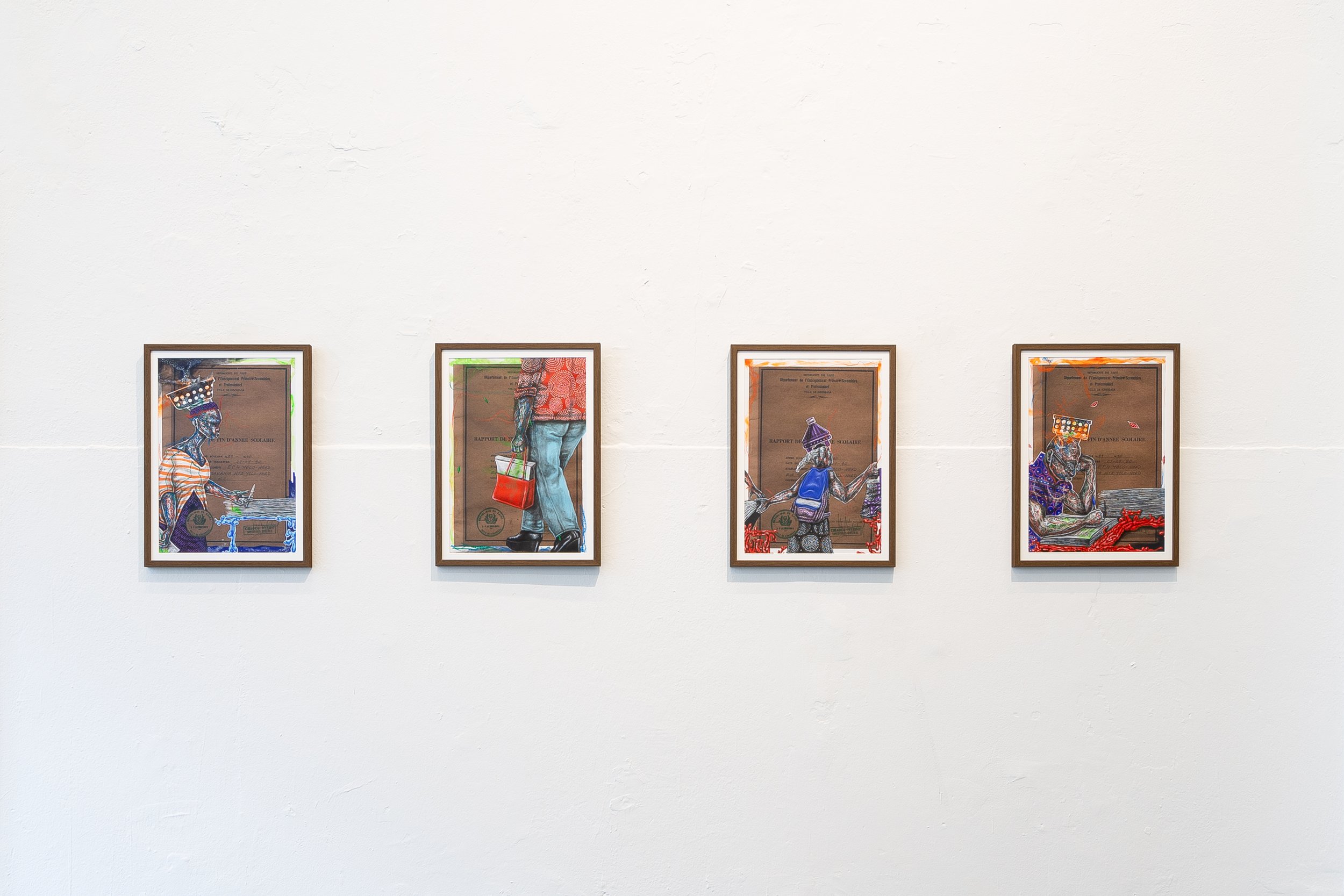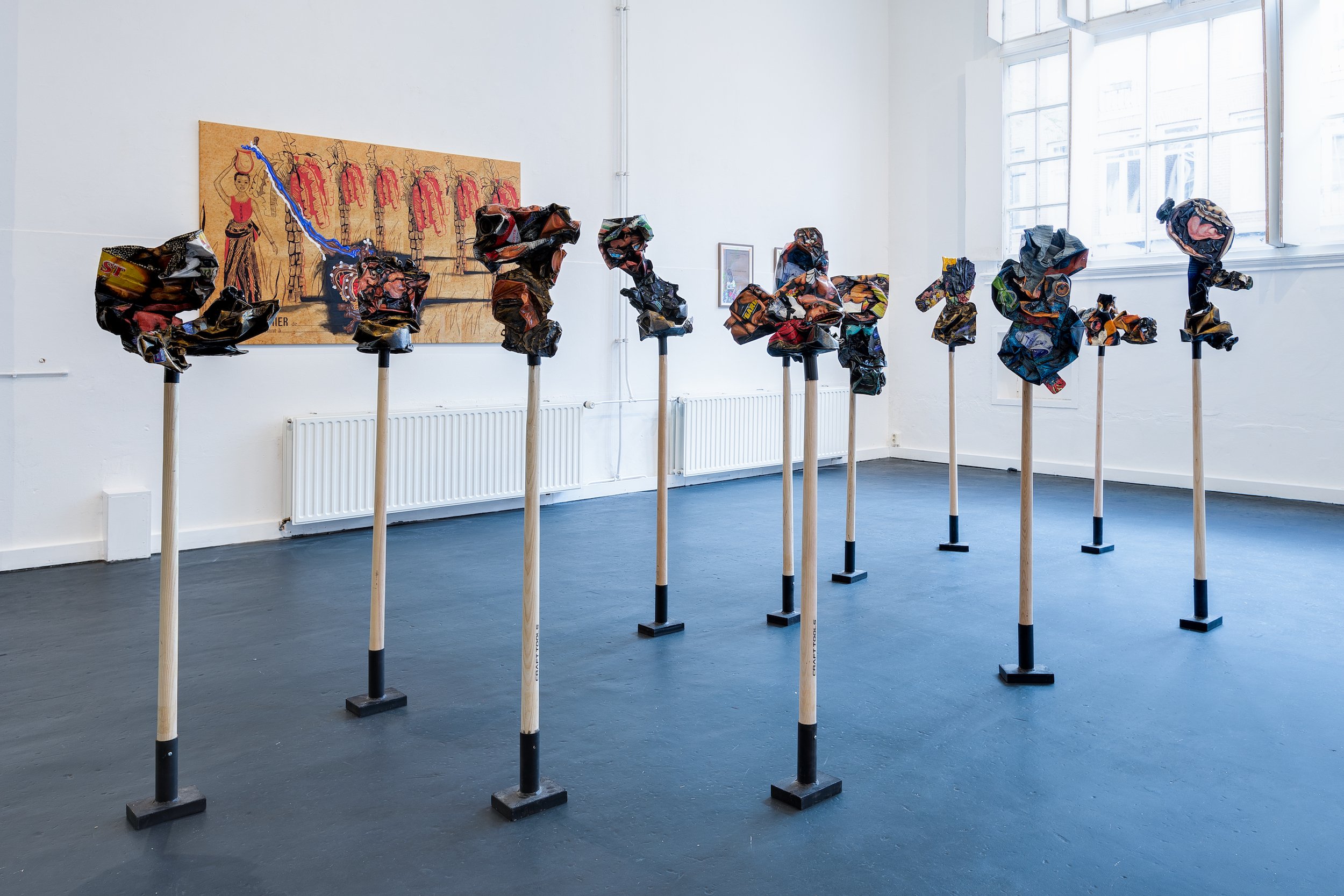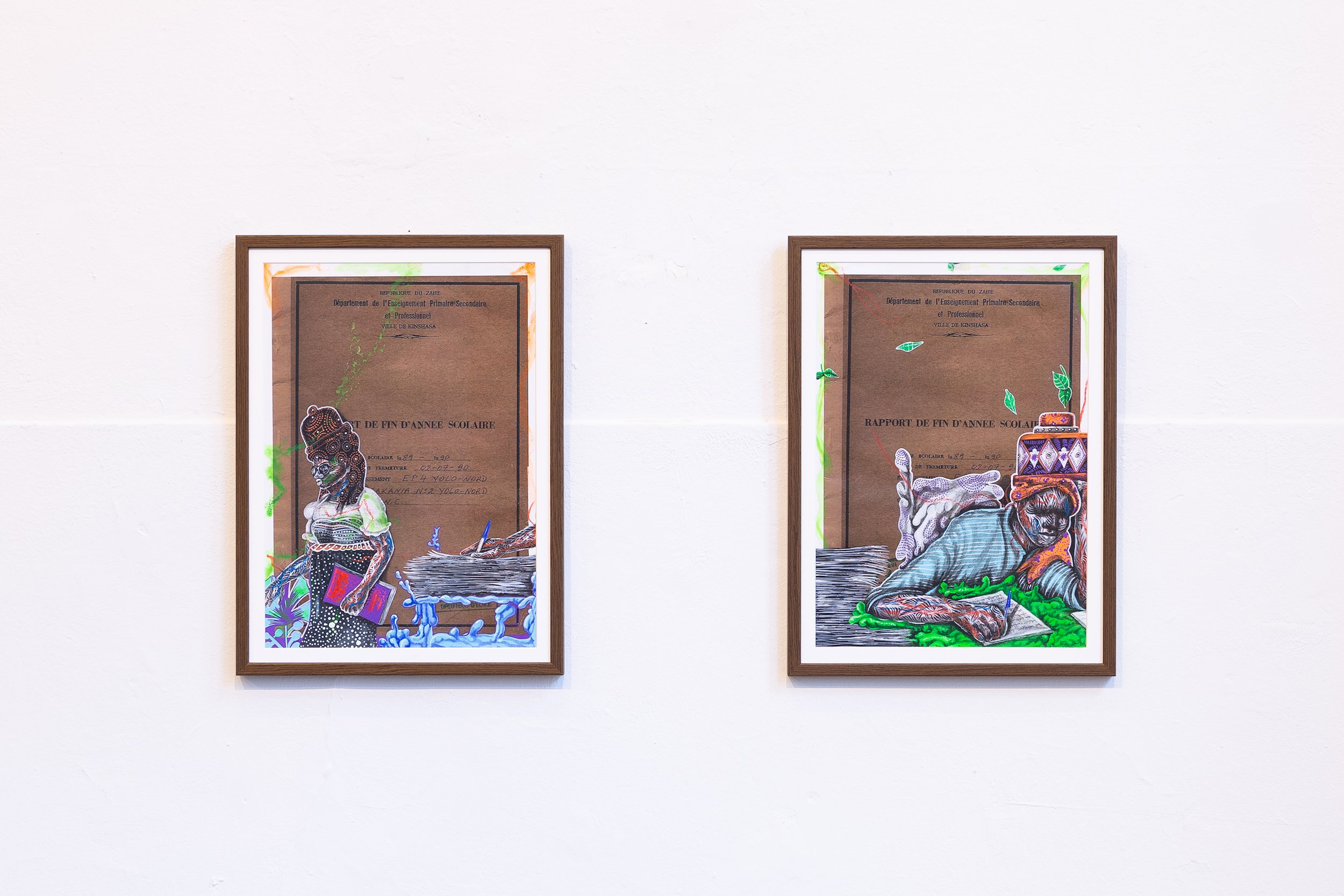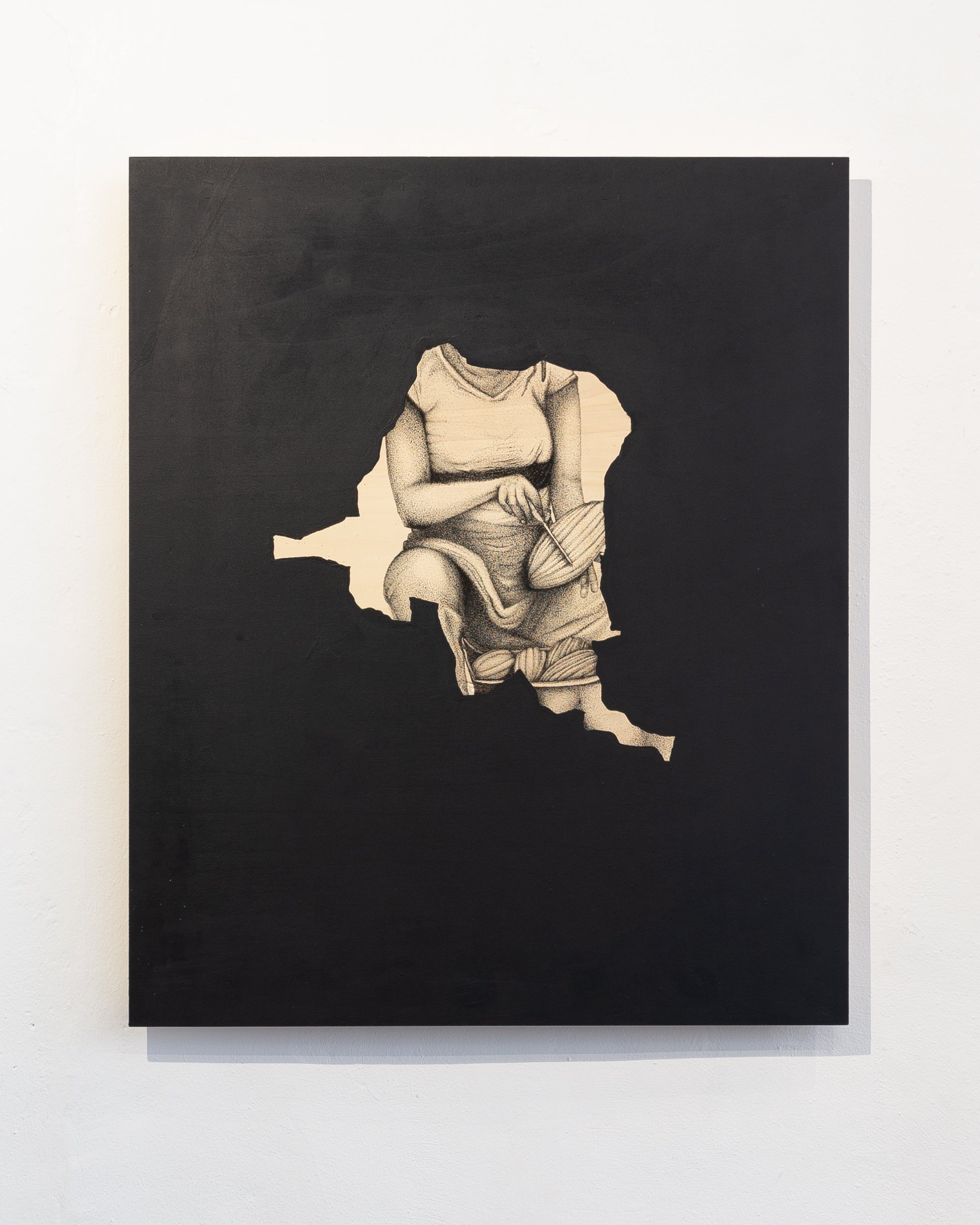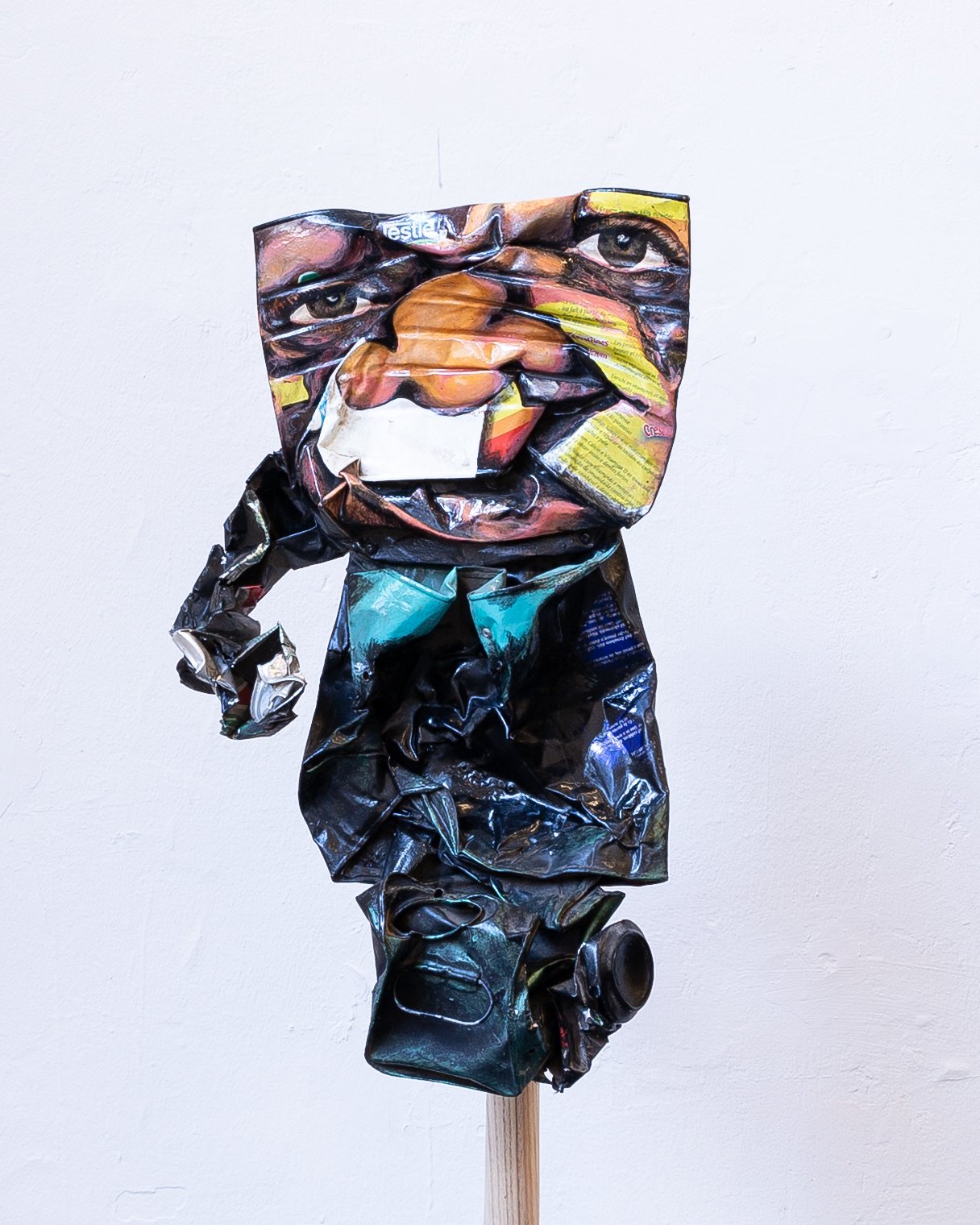We are proud to present the work of Fransix Tenda Lomba (Kinshasa, Democratic Republic of Congo, 1984). His practice spans drawing, painting, sculpture and animated video. He is a Rijksakademie alumnus and also graduated from the Academy of Fine Arts in Kinshasa in 2006. Fransix is one of the principal artists of Kin Art Studio.
Joint Power, 2023, 200 x 140 cm, acrylic and print on canvas
About the exhibition
On view will be his most wel known series, the research project ‘Le choc est là’, which is inspired by chocolate. The double meaning of the title refers to the cultural, economic, political, social and geopolitical shocks in the cocoa chain, which Fransix traces from the different places of origin of cocoa to the world of consumers.
By juxtaposing elements from his parents‘ personal archives depicting life in the Congo with visual material from the archives of the world‘s major chocolate companies, Fransix has created large-scale drawings that form the basis of his video animations. These works tell divergent, yet deeply intertwined, stories about the inter-human bond through the production and consumption of raw materials like cocoa – personal commentaries on the collective memories of post-colonial societies and the bittersweet reality that the pleasure of chocolate is fraught with suffering.
Chocolate figures
The painting ‘Joint Power’, for example depicts Mary II, Queen of England (1689-1694), who married her cousins Willem van Oranje. She was a very popular monarch. As was chocolate the popular fruit of Europe's expansionist policy in Africa and South America. Mary made a mark on Dutch culture through her influence on ceramics, garden design and the historical figures she had made out of chocolate. The historical figures in Fransix's paintings also appear to be made of chocolate. Other paintings in the exhibition, such as 'Crown' show the historical production of cocoa cultivation. This painting reflects the political and commercial responsibility of the Kingdom of the Netherlands, represented by a gold-plated crown, as its ports were and are large gateways to receive tons of cocoa beans.
Also on view in the exhibition is the installation ‘Bana Ya Limete’, which reflects on another period in Congolese history. Once again, Fransix depicts this through the use of products. The work is made from aluminium cans, thrown on the ground in a commune of the city of Kinshasa, known for the presence of the factories that drove the city's economy from 1965 to 1980. With the installation the artist commemorates two destructive looting operations in the 1990’s, when soldiers of the Zaire civil guard decided to help themselves after not being given their salaries. This situation brought anguish and stress to the population and the tin cans bear witness to these troubled times. Fransix translated the people's fear into the cans by shaping them as portraits, supported by wooden sticks.
The Crown, 2023, 140 x 200 cm, acrylic and print on canvas
Our school
The series of drawings ‘Our School’ uses an end-of-school-year report from Zaire between 1989 and 1990 as a backdrop. The seven drawings are a personal interpretation of the atmosphere that prevailed in Kinshasa's urban education department before it was looted in 1990. We see teachers preparing written reports. Today, the education sector still suffers from the effects of this looting. As a result, teachers still write their reports by hand as digitalisation is not yet widespread.
The lines used to draw the characters on the reports are inspired by palm lines and the lines of school notebooks. The intertwined lines reflect the different experiences each person has undergone. The characters wear cooking pots on their heads. The Congolese firepot 'Mbabola', a handmade pot made of recycled aluminium and the Moroccan tagine. These objects show the culture of sharing that exists around the world.
In his works, Fransix shows the world's interconnectedness through raw materials and consumer products. Tracing the history and journey of one such product exposes the general history. We are all connected through cocoa, cans and cooking pots.
Articles about the exhibition
Gallery Viewer, The bittersweet taste of chocolate
